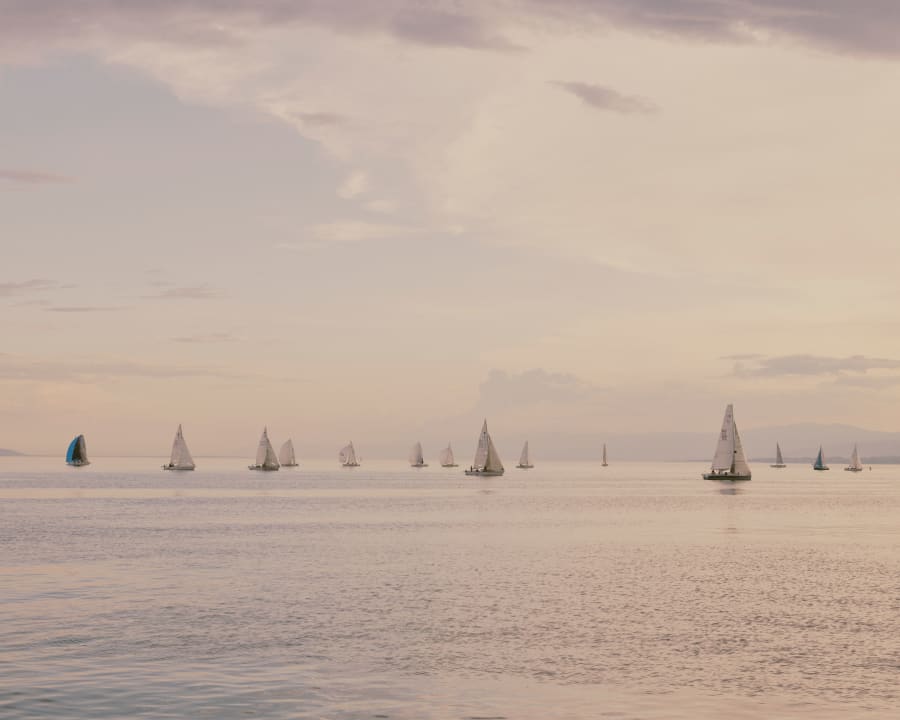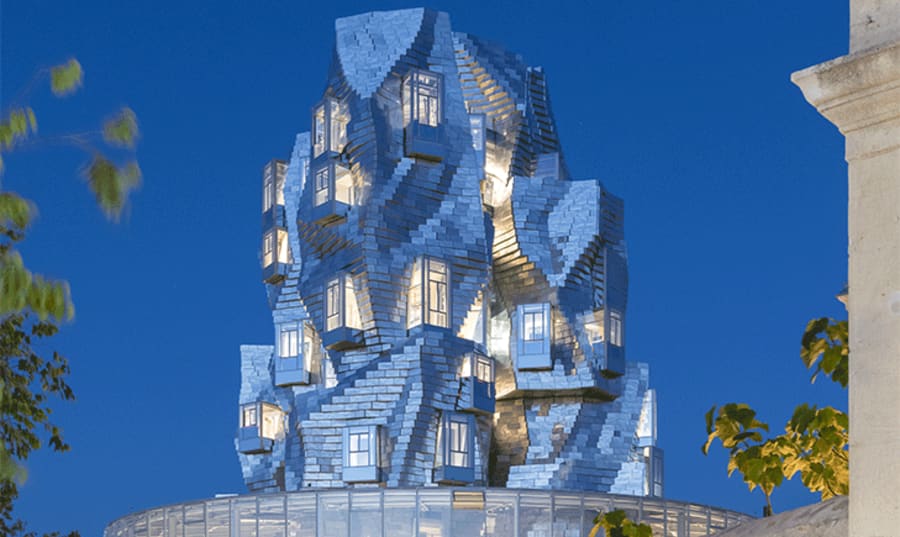When seated next to a visiting artist at a dinner recently, I asked about their view on artist residencies. Is it not a rather romantic and perhaps outdated view of artistic practice to suggest one must find inspiration in a foreign land? Rather than indulge my proposition, the artist explained that any encounter might provide a spark or an idea that changes how one moves through the world as an artist. A residency might offer a change of pace, letting one slow down or speed up – and isn’t this something we all need every now and again?
Switzerland is home to over 60 residencies for emerging and established, Swiss and international artists alike. Some are invite-only, others are open to all through application processes. Since 1999, the independent association Artists in Residence has helped artists discover and navigate these opportunities by compiling an expansive list of residencies within the country. ‘We want to ensure that people from all over the world can easily access information about opportunities in Switzerland,’ says the platform’s founder, Wenzel Haller.
The most notable Swiss residencies are situated in outstanding locations and provide the change of pace my conversation partner suggested; a place for retreat or exposure, the opportunity to find solace or a connection with a like-minded community.
In the northern canton of Thurgau, the former Carthusian monastery Kartause Ittingen grows its own hops for beer and grapes for wine. It also features a hotel and a contemporary art museum, while a farm, dairy, and butchery provide the ingredients for the fine-dining experience at the onsite restaurant. A former hermitage is available to visiting artists and writers for stays lasting between 4 and 6 weeks. During their residency, the artist can enjoy the sprawling grounds and indulge in solitude.
For Zurich-based artist Mara Mars, going to Kartause Ittingen was a definite change of pace: ‘As a city dweller, I was curious to see what effect the seclusion, the silence, and the nature would have on me and my artistic work,’ she says. Mars spent her time taking in her surroundings, observing how the light changes throughout the day, and walking along the fields to the river Thur and into the forest. ‘Observation and mindfulness became part of the daily routine.’ At the end of her residency, Mars came away with an idea for a new site-specific installation involving old vines, along with numerous paintings and photographs.
Seclusion and silence are key aspects of residencies in Solothurn, known for its Baroque architecture, and the remote Alpine village of Bellwald. In Solothurn, international artists can apply to stay in a studio apartment located within Altes Spital, a former hospital founded in 1350, for up to 3 months. Farther south, in Bellwald, in the canton of Valais, artists can apply to stay for between 2 to 6 months in the so-called ‘Kirchenstadel,’ or ‘church stable,’ in the middle of the 14th-century village. At 1,560 meters above sea level and with just over 300 permanent residents, Bellwald is the epitome of a quiet mountain village – that is, until the ski season starts. German artist Ben Goossens spent March and April this year at the Kirchenstadel. ‘There were days when I hardly spoke at all,’ Goossens wrote in a reflection at the end of the residency. ‘I was stuck with myself, which was a very intense, but also exciting experience.’ He found this seclusion to be conducive to developing his artistic practice: ‘Being able to focus on art and myself without the usual everyday constraints was very valuable. It is during such ‘time-outs’ in new places and away from my usual routines that I feel my mind can relax and open up to new ideas.’
Less remote but nevertheless invested in processes of research and reflection, La Becque – a stunning complex on the shores of Lake Geneva between Vevey and Montreux – hosts a number of residencies with different aims. Artists of all backgrounds can apply for the Principal Residency program, while the Satellite program supports long-term projects for national artists. Both programs place a particular focus on the intertwined notions of nature, the environment, and technology. Beyond the spacious artists’ apartments, the grounds feature a professional sound studio, a vast wood workshop, a ceramics studio, sprawling gardens, and plenty of communal areas. Additional residencies hosted at La Becque are offered through partner organizations, including the Lausanne museum hub Plateforme 10 and the Swiss national arts council Pro Helvetia.
La Becque is one of nearly 20 residency sites throughout the country to which artists can apply via Pro Helvetia. The arts council provides a one-stop-shop application process for 3-month funded residencies, which are open to cultural practitioners from areas where Pro Helvetia has liaison offices. ‘Residencies go both ways,’ says Ines Flammarion, the head of communications at Pro Helvetia. ‘We are looking to welcome artists from our offices’ global regions in Switzerland, while also sending Swiss artists abroad.’ The aim, in both cases, is to foster cultural exchange and give artists the chance to encounter new surroundings.
Pro Helvetia also supports one or two residencies per year at the PROGR art center in Bern, where residencies are primarily awarded via Residency.ch. Here, the residency program prioritizes establishing connections between visiting artists and the local cultural scene. Housed in a 4,500 m2 five-story former school complex, PROGR includes artist studios and workspaces for creative enterprises, as well as galleries, a café, and a bar, with space to spare for events and concerts. Artists-in-residence are accommodated in an apartment on the top floor and looped directly into the tight-knit artistic community: ‘Bern is not a big city, and visiting artists quickly become acquainted with local practitioners,’ says Peter Aerschmann, the director of the PROGR residency program. Time and again, these exchanges have led to exhibitions or invitations to give performances.
In a perfect combination of natural wonder and community engagement, the cross-disciplinary residency hosted by Verbier 3-D Foundation is located at an altitude of 2,300 meters in the eponymous Alpine village in Valais. Yet, despite its seemingly remote positioning, its program is all about promoting dialogue. The foundation invites artists to come to Verbier for a period of 6 weeks and rethink the relationship between art and nature through participation in educational events with the local communities and intellectual exchanges with scholars and scientists. Large-scale sculptures created during artists’ stays are then exhibited in an outdoor sculpture park, freely accessible to the public year-round. Director Kiki Thompson emphasizes that the monumentality of the landscape shapes the artistic production: ‘You’re on this mountain, and you see this incredible vast view of all these other mountains,’ she says. ‘It’s like being inside a painting by Caspar David Friedrich.’
Regardless of whether artists seek to stay in a bustling urban center or a more serene rural setting, everyone I speak with points to one common denominator of completing a residency in Switzerland: the country’s small size means that the whole country is readily accessible. Peter Aerschmann stresses that while Bern itself is not a large city, it is only a 1-hour train ride to Lausanne, Basel, or Zurich. Speaking in the same vein, Ines Flammarion notes that ‘Switzerland offers great diversity.’ With the country’s rich cultural network to draw from and incredible collections of art as well as landscapes to take in, it is possible for visiting artists to find both stimulation and reprieve.
Rebecka Domig is an art historian, writer, and curator at Kornhausforum, Bern.
Caption for header image: La Becque. Photograph by Matthieu Croizier for Art Basel, 2023.
Published on July 23, 2024.


